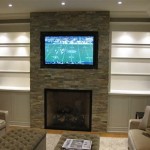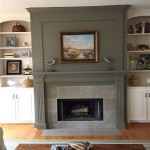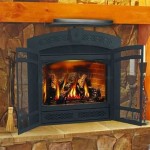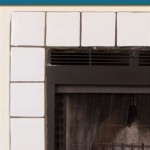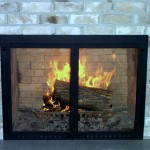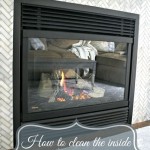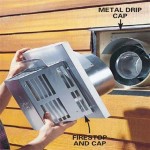Fireplace Inserts: A Guide to Glass Rocks
Fireplace inserts offer a modern and efficient way to revitalize an existing fireplace. They provide improved heating performance, enhanced safety features, and a variety of aesthetic options to suit different home styles. One increasingly popular design choice for fireplace inserts is the use of glass rocks, offering a contemporary alternative to traditional gas logs. This article explores various aspects of glass rocks in fireplace inserts, outlining their benefits, types, installation, maintenance, and considerations for safe and effective use.
Fireplace inserts are self-contained units that are installed inside an existing fireplace opening. They connect to a venting system, either a chimney or a direct vent, and typically burn natural gas, propane, or electricity. Unlike open fireplaces, inserts are designed to radiate heat into the room, significantly increasing heating efficiency. An insert reduces air loss up the chimney, minimizing drafts and heat waste. Glass rocks, in this context, serve as the decorative media within the firebox, replacing or complementing traditional log sets. They contribute to the overall aesthetic appeal while also playing a role in heat distribution.
Aesthetic Advantages of Glass Rocks
The primary appeal of glass rocks in fireplace inserts lies in their aesthetic versatility. Unlike the rustic appearance of gas logs, glass rocks offer a sleek, modern look that complements contemporary interior designs. They are available in a wide range of colors, sizes, and shapes, allowing homeowners to customize the appearance of their fireplace to match their personal preferences and décor. From vibrant blues and greens to subtle ambers and blacks, the color options are nearly limitless. This allows for a personalized aesthetic statement, creating a focal point that reflects individual style.
The reflective properties of glass rocks further enhance their visual impact. As the flames dance and flicker, they illuminate the glass surfaces, creating a mesmerizing play of light and shadow. This adds depth and dimension to the firebox, making the fireplace a more engaging and visually appealing feature in the room. The light reflection also helps to brighten the surrounding area, contributing to a more inviting atmosphere.
Beyond color and reflectivity, glass rocks can be arranged in various patterns and configurations. Some homeowners prefer a uniform layer of a single color, while others opt for a more eclectic mix of colors and sizes. The arrangement can be tailored to mimic natural formations, such as river stones or volcanic rock, or to create abstract designs. This level of customization allows for a truly unique and personalized fireplace experience.
Furthermore, the clean and minimalist aesthetic of glass rocks offers a stark contrast to the more traditional look of gas logs. This contrast can be particularly appealing in modern and minimalist homes, where clean lines and uncluttered spaces are valued. The glass rocks provide a visual break from the often-busy textures and patterns of traditional décor, creating a sense of calm and sophistication.
Practical Benefits of Glass Rocks
Beyond their aesthetic appeal, glass rocks offer several practical benefits in fireplace inserts. One key advantage is their durability. Unlike gas logs, which can degrade over time due to exposure to heat and soot, glass rocks are highly resistant to thermal shock and discoloration. They are manufactured from tempered glass, designed to withstand the high temperatures within the firebox without cracking or shattering. This ensures that the glass rocks will maintain their appearance and structural integrity for years to come, requiring minimal maintenance or replacement.
Glass rocks also contribute to efficient heat distribution within the firebox. The rocks absorb and radiate heat evenly, helping to distribute warmth throughout the room. While the primary heat source is the gas burner, the glass rocks act as a thermal mass, retaining heat and releasing it gradually even after the flames have subsided. This can help to maintain a consistent room temperature and reduce temperature fluctuations.
Another practical benefit is the ease of cleaning. Glass rocks are relatively easy to clean compared to gas logs, which can accumulate soot and grime over time. A simple wipe with a damp cloth is usually sufficient to remove any surface dirt or debris. For more stubborn stains, a mild detergent can be used. Because glass rocks are non-porous, they do not absorb odors or stains, making them a hygienic and low-maintenance option.
The installation of glass rocks is also generally straightforward. They are typically supplied with the fireplace insert or can be purchased separately. The rocks are simply arranged on the firebox floor, ensuring that they do not obstruct the burner or pilot light. The arrangement can be adjusted to achieve the desired aesthetic effect while maintaining proper airflow around the burner. Some inserts may have specific recommendations for the optimal placement of glass rocks, so it is important to consult the manufacturer's instructions.
Finally, glass rocks can sometimes be more energy efficient indirectly. Because they distribute heat more evenly, the thermostat may cycle on less often, potentially saving energy. This depends on the specific fireplace insert model and the heating patterns of the room.
Considerations for Safety and Installation
While glass rocks offer numerous benefits, it is crucial to consider safety and proper installation when using them in fireplace inserts. First and foremost, it is essential to use only tempered glass rocks specifically designed for fireplace applications. Regular glass is not suitable, as it can shatter or explode when exposed to high temperatures. Tempered glass rocks are manufactured to withstand thermal shock and are rigorously tested to ensure their safety.
The quantity and arrangement of glass rocks should be carefully considered. Overfilling the firebox can obstruct the burner and pilot light, leading to incomplete combustion and the production of carbon monoxide. The arrangement of the rocks should allow for adequate airflow around the burner, ensuring that the flames burn cleanly and efficiently. It is important to follow the manufacturer's recommendations regarding the amount and placement of glass rocks.
Proper ventilation is also critical. The fireplace insert must be connected to a functioning venting system that is properly sized and installed. The venting system removes combustion gases, such as carbon monoxide and nitrogen dioxide, from the home. A blocked or improperly installed venting system can lead to a buildup of these gases, posing a serious health hazard. Regular inspection and maintenance of the venting system are essential to ensure its safe and efficient operation.
When installing glass rocks, it is recommended to wear gloves to protect the hands from sharp edges or splinters. It is also important to handle the rocks carefully to avoid chipping or cracking them. Once the rocks are in place, it is advisable to test the fireplace insert to ensure that it is operating correctly. Check for any unusual smells, noises, or flickering flames. If any problems are detected, consult a qualified technician for assistance.
Regular maintenance is important for ensuring the safe and efficient operation of the fireplace insert. This includes cleaning the glass rocks periodically to remove any accumulated soot or debris. It is also important to inspect the burner and pilot light for any signs of damage or malfunction. A qualified technician should conduct a thorough inspection of the fireplace insert and venting system at least once a year.
Finally, carbon monoxide detectors should be installed in the home, particularly near sleeping areas. Carbon monoxide is a colorless and odorless gas that can be deadly. Carbon monoxide detectors provide an early warning of a potential carbon monoxide leak, allowing occupants to evacuate the home safely. Check batteries regularly and replace them as needed.
By carefully considering these safety and installation factors, homeowners can enjoy the aesthetic and practical benefits of glass rocks in fireplace inserts while ensuring the safety of their families and homes.

We Will Be Updating Our Fireplace To Use Glass Rocks Rather Than Logs Outdoor Gas Firepit That Fire

Fireplace Inserts Nw Natural Appliance Center

Chaska 34 Gas Fireplace Insert Kozy Heat

Kozy Heat Chaska 34 Gas Fireplace Insert American Eagle And Playsets

Modern Vented Fireplace Driftwood Google Search Accessories Glass

Real Fyre Reflective Fire Glass For Contemporary Gas Burners Insertazuria 40 Lb Bucket Fireplace Pit

Lava Rock Vs Fire Glass Blog Fireplace And Chimney Authority

E20 Gas Fireplace Insert Dreifuss Fireplaces

Vchin Fire Pit Glass Rocks 20 Pounds Copper For Propane Fireplace And Outdoor Decorative 1 4 Inch Reflective Beads Yahoo Ping

Fireplace Accessories Full Service Chimney
Related Posts

